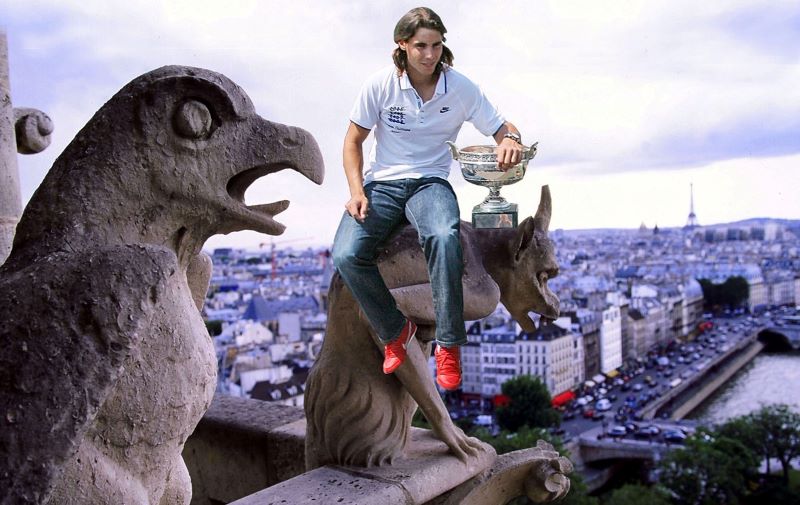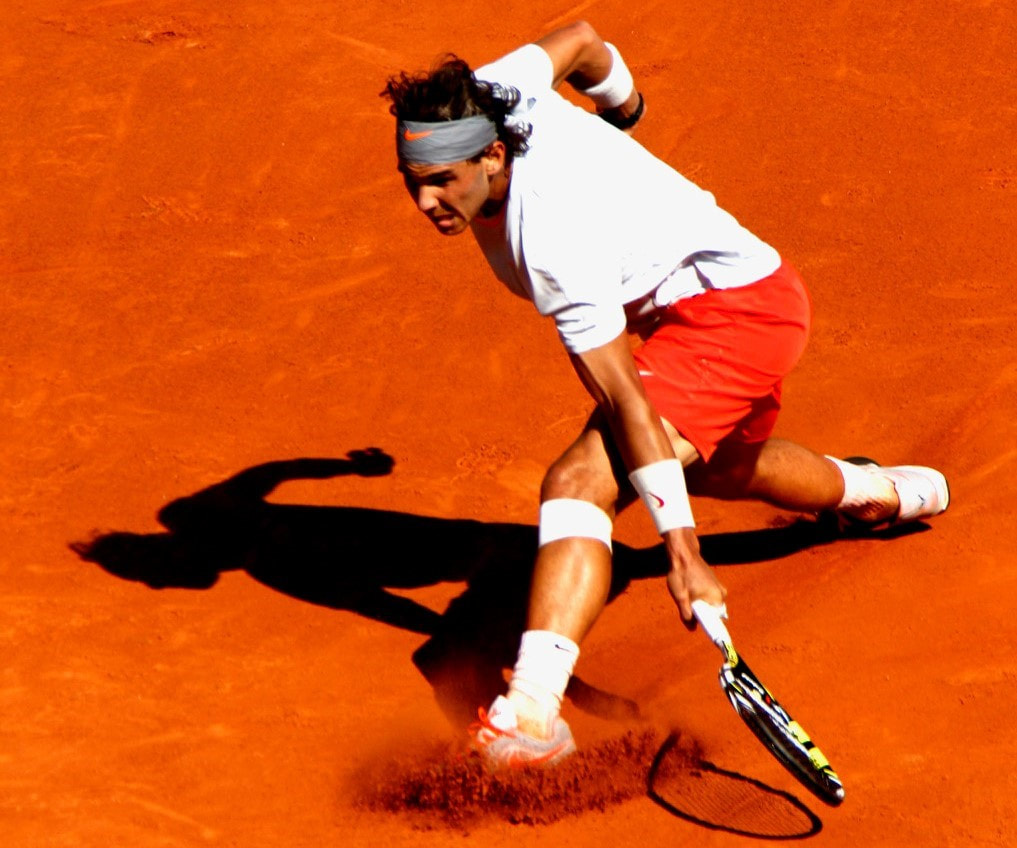|
Four superstars, overlapping. I am referring to Rafa Nadal, one of the nicest people I have met in sports, who won his 13th French Open on Sunday. I am also referring to Chris Clarey and Karen Crouse of the NYT, who wrote about Nadal in the Monday paper. And I am also referring to Art Seitz, master tennis photographer, who has been snapping away, well, forever. I loved reading about Nadal and seeing Art’s photos, having become a Nadal fan in 2011, the only time I met him. I had heard he was a good guy, a sportsman, and he lived up to his reputation on a miserable day, with the remnants of Hurricane Irene lashing New York much as the tail end of Hurricane Delta was drenching New York on Monday. He had done his obligatory media conference and was eager to get back to Manhattan, but he was promoting his book and had promised me a few minutes for an interview. We got into a conversation, and I mentioned that I had covered eight World Cups by then, including my first, in his country, Spain. I think it's fair to say that reporters do not expect their subjects to show much, or any, interest in them. But Nadal seemed intrigued that an American knew and loved soccer, even my modest dose of knowledge. I knew that his uncle, Miguel Angel Nadal, had been a mainstay for Johan Cruyff at Barcelona in La Liga in the 90s, and I had covered Spain’s World Cup championship in 2010. So we talked soccer…as well as tennis….as well as his penchant for cooking for himself and entourage on the road. He could have ducked out at any time, but he stayed and talked, and my impressions of him since have been confirmed – a centered person who has willed himself to the top of tennis, and can speak with compassion about the pandemic, knowing it is more important than tennis. My pals Chris Clarey and Karen Crouse caught him perfectly in Monday’s paper – Chris concentrating on the match and the career, Karen focusing on his values and his acquired trilingual abilities. When I first saw Nadal nearly two decades ago, he could not speak any English in public. Now he is eloquent, from the heart. Felicidades, Rafa. Chris Clarey:
https://www.nytimes.com/2020/10/11/sports/tennis/nadal-french-open.html Karen Crouse: https://www.nytimes.com/2020/10/11/sports/tennis/french-open-rafael-nadal.html My article in 2011: https://straightsets.blogs.nytimes.com/2011/08/28/off-the-court-nadal-wears-chefs-whites/ For a sample of Art Seitz tennis photos, check out his Facebook page: https://www.facebook.com/100001883302306/posts/4593499944056070/?extid=0&d=n
Tom Schwarz
10/12/2020 01:10:06 pm
Oh man yet another GREAT one. Thanks GV!
Marty Appel
10/12/2020 03:42:55 pm
He seems like a well grounded guy, and it must have been a delight to spend that 1-on-1 time with him. We will look back on this era of "the big three" as we do on golf when Palmer-Nicklaus-Player ruled. What a time!
bruce
10/12/2020 03:49:33 pm
george,
George Vecsey
10/12/2020 05:08:02 pm
Tom, thanks,
Curt Block
10/12/2020 10:18:21 pm
Do you know everyone who ever owned a
George
10/13/2020 09:13:28 am
Captain Curt: Thanks for the nice words. You know from your own work how we meet people once....form our impressions....and move on. I've had some great one-time interviews with sports and non-sports people -- John McCain, great guy, Colleen Dewhurst between sessions on a matinee Saturday earth mother, Larry Flynt, obscenity monger -- but charismatic and smart, before he got shot, etc. etc. Plus athletes and coaches. You never knew. You've got your stories, too -- miss them at our lunches. Be well, GV
bruce
10/15/2020 02:39:51 pm
george, 10/15/2020 09:45:27 am
Another great humanist story. You are the master of putting people at ease and capturing their humanity. There is so much more to people than how then are perceived by the public. Comments are closed.
|
Categories
All
|











